One stick can improve the way you work. Two sticks can change your entire workshop regimen.
This blog entry began months ago when Richard Maguire posted an excellent video called “The Holdfast and the Batten,” which demonstrates how to use a notched batten to secure your work against your planing stop.
It works brilliantly. So brilliantly, in fact, that I started to comb through my old books – both in French and English – for some hint of it. I asked Jeff Burks what he thought. And, most important, I made a notched batten that looks identical to one shown in Albrecht Dürer’s famous “Melancholia I” (1514). This engraving is so famous that it graces the wall of the bathroom at The Woodwright’s Shop.
If you start looking for this notched stick in the historical record, you will begin to see it everywhere. It has different shapes at the ends – ogees, coves, bootjack, etc. Many of these sticks have holes bored in them as well. They appear in workshop drawings, engravings about architecture and geometry, and in images of libraries.
It is obvious that the stick is a straightedge, called a “reglet” in France and England – used to lay things out or to follow a line of text in a book. But why the shaped ends?
Here’s my guess: To differentiate it from sticks that were mere offcuts, scrap or project parts.
And the holes? Peter Follansbee thinks they are for hanging the reglet on the wall. Two holes ensure you are always going to be able to hang the thing without flipping it end for end. I think that’s an excellent guess.
Several weeks ago I made a reglet that looks like the one shown in Melancholia I, and I hung it on the wall above my bench. The bench I use everyday is quite primitive. No tail vise. No dog holes. My leg vise lacks a parallel guide and a garter. It is a lot like a workbench from the 16th, 17th or 18th centuries.
The ‘Dürer Stick’ (as I call it) has been a constant companion during the last two projects. It has been a straightedge, and it also has held my work in place as I traversed it or planed it with the grain. I have ogee ends on my stick, and they work just as well at securing the work as the straight taper that Maguire shows.
Also, the holes in the stick? I used those to nail the stick to the bench to act as a fence while cutting 16 dados today. Again, it worked brilliantly.
Before you jump up my butt about this, know that I am wearing two pairs of flannel-lined pants. Also, I ask you to do this one thing before criticizing: Make a stick. Use it. If you can’t make the stick, you probably shouldn’t be commenting on a woodworking blog anyway.
Was that bitchy? Sorry.
Oh, and what did I mean about how two sticks could “change your entire workshop regimen?” More on the second stick later. This second stick is a mind-blower.
— Christopher Schwarz

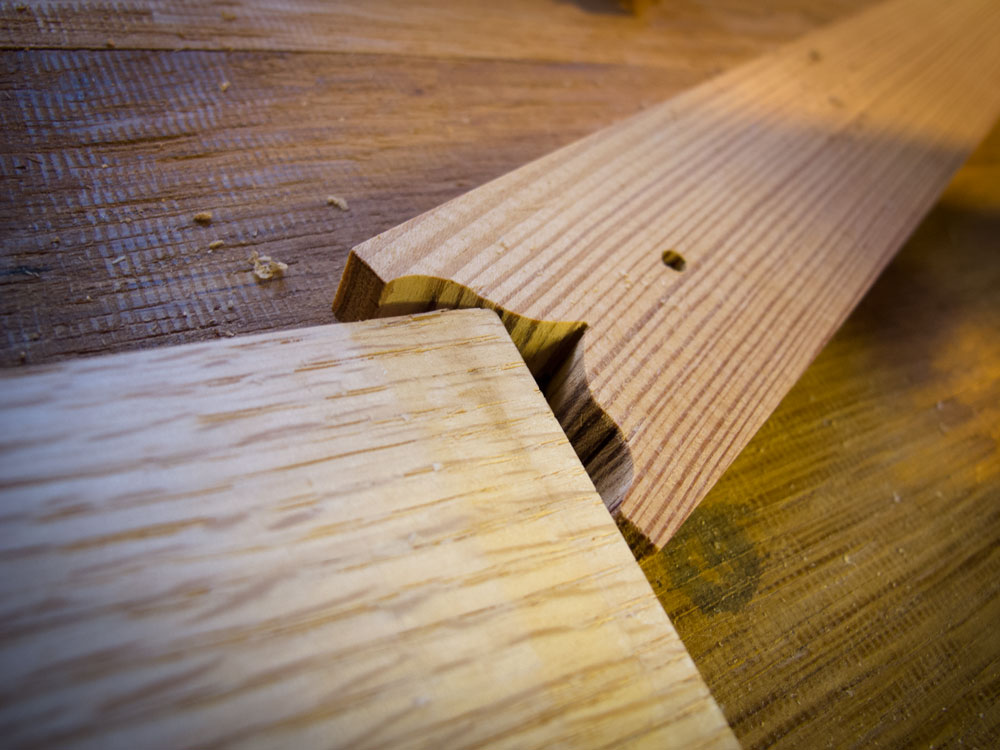

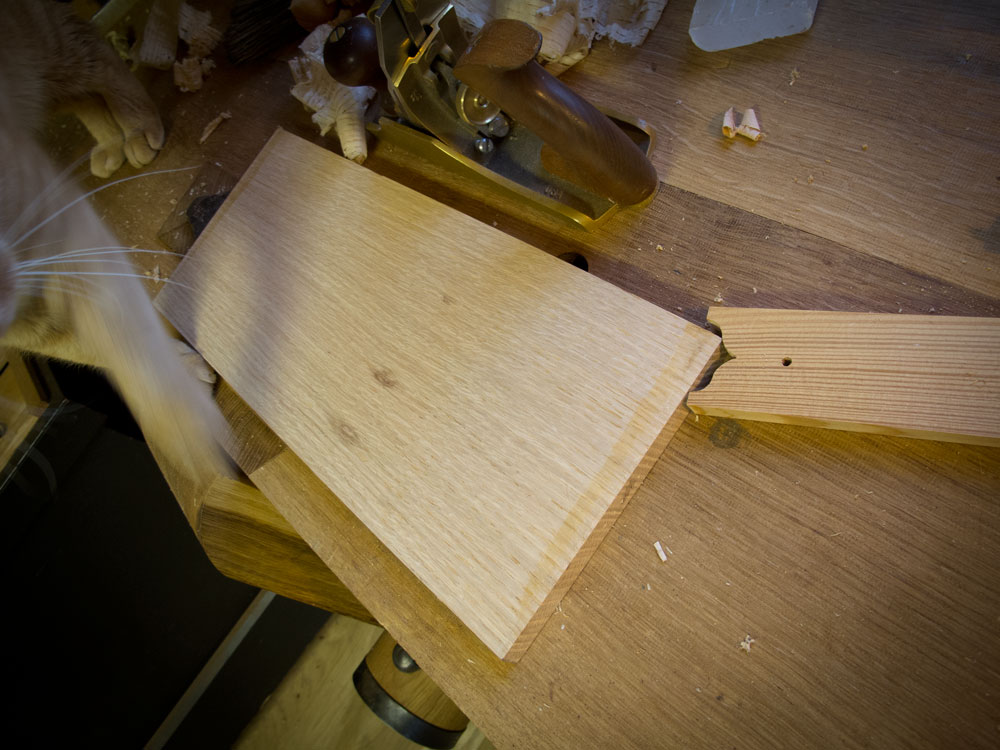
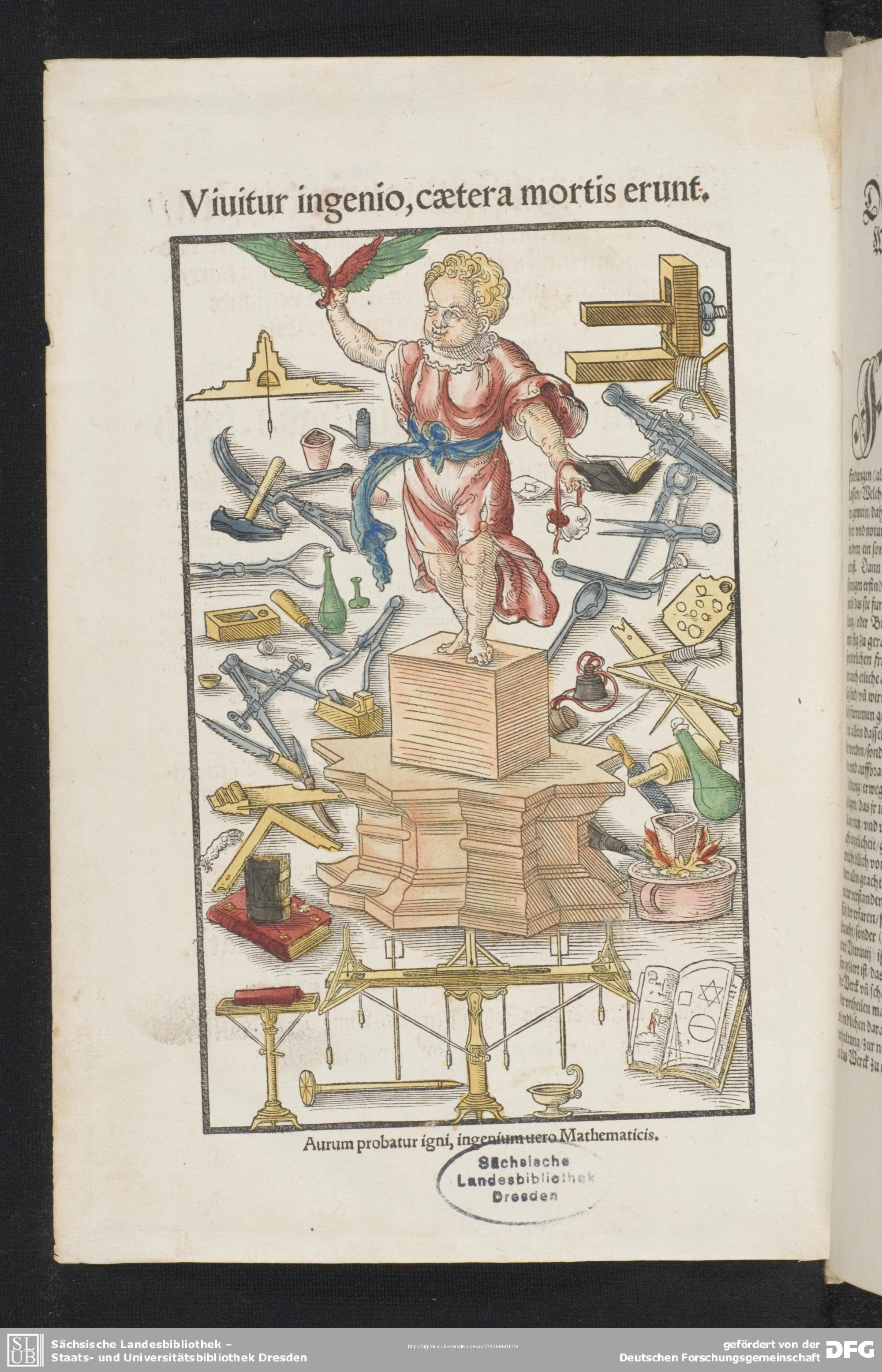

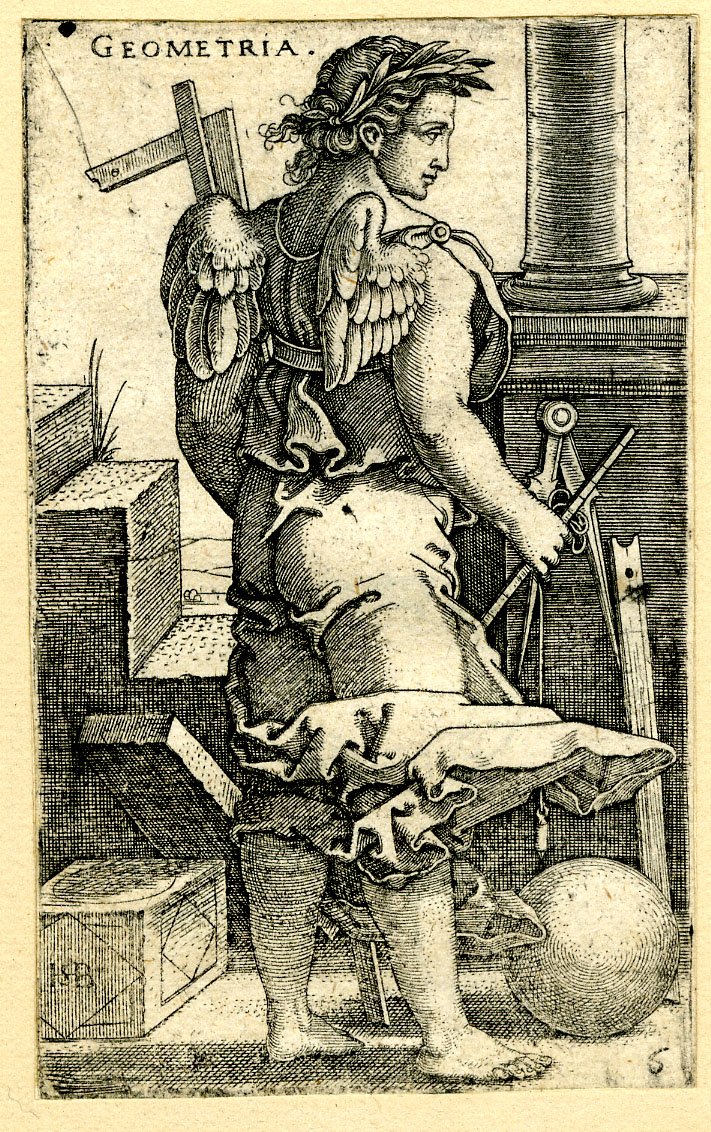
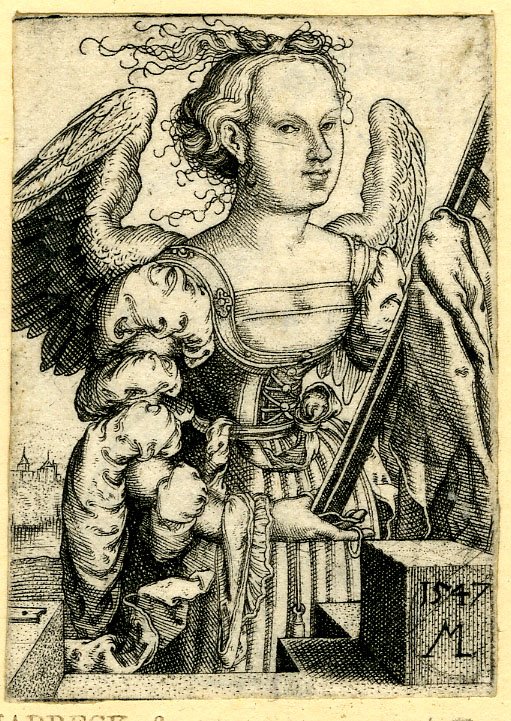


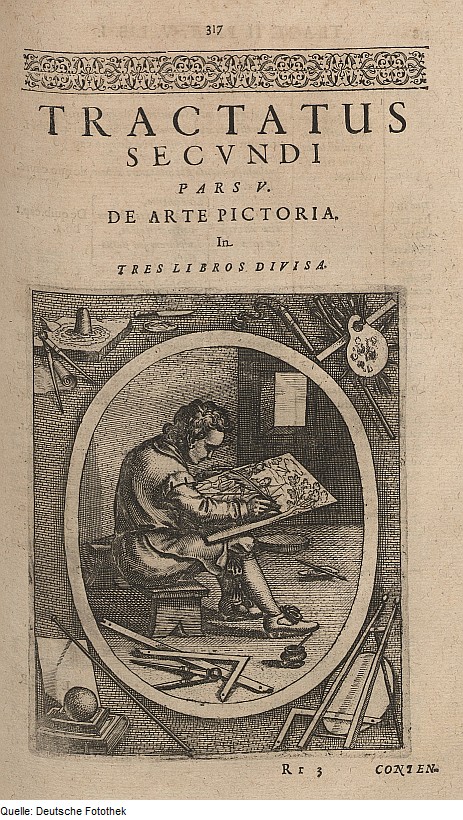
Yep, they (it) do (does) work. And I still haven’t bored holes in the middle are of my bench to use it. Just clamping it with an F-clamp in from the back edge of the bench.
My second stick is a back-scratcher and stuff-that-rolled-under-the-bench-getter. Multi-tasking is the wave of the future.
OK, OK, I get it, I shouldn’t be commenting.
Chris,
I have seen this pieces like this with a v-notch for shooting edges of boards in pattern makers shops. It is amazing and have used mine for years. Also I have seen these boards screwed and nailed to the benches, which I assume is where the holes come in.
FR
I’ve seen the stick all over since you started dropping notes about it here and there; never gave them another thought beside “straight edge”.
I’m guessing period observers looked at them the same way we see ink pens.
About the first picture . . . do I detect the ghost of a shop cat? Has Megan been “gifting” again?
That is a neighbor’s cat who is spending Thanksgiving in my shop. He’s a good guy. Loves bench work.
Impatient to read about stick II.
So where can I buy one?
I hear Benchcrafted will make you one.
I heard complete shop drawings will be available in “Make a Stick from a Tree”.
Finally, a good use for this unicorn horn I’ve been hoarding.
Now to figure out how to get it off the unicorn.
The hole might augment the purchase of the holdfast? Depending on diameter and placement
“What are you reading dear?” “Oh, just a blog…..a bunch of guys discussing their sticks.” “Figures.”
Hehehe, just had this exact same conversation as I reached this.
I too have been playing with sticks since Richard pointed to it’s use, works well. Nothing new under the sun my grandad used to say, guess he was right.
I can see the advantages of making this stick with reference straightedges. Kind of two tools in one. I notice in the pictures that it is mostly shown with layout tools rather than holdfasts.
If two are better than one (very curious about the second one), I’ve got a pair of winding sticks that would look good with a couple of notches in them.
I’m not sure if the ends would have been decorated to keep it from being thrown out. Most of these images are not of joiners but of mathematicians and scholars, so I doubt they would be throwing away a bunch of offcuts very often. Maybe they’re just decoration, but I think there’s more to it. They appear to always be shown with dividers and be close to the same width. Perhaps the notch was a known distance in width (an inch or some other archaic unit) and was used to set the dividers for making an actual measurement when not using simple ratios for figuring?
It looks for me as the length of these sticks on the pictures is equal to the ell, the most common length measurement in earlier times. On many churches and town-halls in Germany and Austria (from other countries I have no information) you can find a norm ell in the wall. http://upload.wikimedia.org/wikipedia/commons/5/53/Wien_Stephansdom_Ellen.jpg
To that end, what if the holes were not for hanging but were a defined distance (1 “ell”) apart? They would be protected from damage unlike a simple stick of the unit length that would get banged up around the ends and the long grain would keep them constant. I’m a little unconvinced about the double-ended hanging theory… there’s a 50/50 chance I’ll pick up my saw by the wrong end if I don’t look… so I always look. I also notice there is nothing in these plates to measure a distance by units with except perhaps what the angel in “Geometria” is holding. “Reg-” is the same root as “reg”-ulation and thereby “standard,” so it might make sense that it was a standard length for making measurements by unit. That would explain the absence of something we would recognize as a ruler.
Coming soon from Lost Art Press!
“Tossed to the Floor: Proper Stacking Patterns for the Notched Stick, Divider & Square”
Could the second stick be the implement in the first colored drawing? It’s along the left side under the compass and above the layout square. If not, any theories on what exactly that is?
My guess is, its just a fancy square just to mark straight lines because It can’t really do much anything else with the way its designed, similar to the miter square in Moxon’s plate 4, and it also shows up in a drawing of a woodworkers shop in a german book written in (I think) 1568 here’s a link to the book http://books.google.com/books?id=1-gtAQAAIAAJ&printsec=frontcover&source=gbs_ge_summary_r&cad=0#v=onepage&q&f=false, and what’s also interesting in this same book the reglet shows up in the drawing of the scuplter’s shop, I wonder what use he had for it
it’s on the Dürer engraving too (look at the complete picture) http://upload.wikimedia.org/wikipedia/commons/1/14/Melencolia_I_(Durero).jpg
I think the stick is a pre-internet meme. Artists were out drinking one night and agreed to start adding random sticks to their art work. “Let’s do this, years from now nerds will sit around trying to figure out what purpose the stick serves.”
I find it interesting that the old engravings place far more importance and the layout tools. It seems that, in the past, a craftsman’s true worth was gauged by his ability to use the layout tools. Their ability to use the cutting tools was secondary. This indicates that the mastery of geometry was highly valued. Maybe, as craftsman, we should switch our focus from tools to geometry and see what new worlds open up.
The “stick” seems a good start.
You might want to grab “By Hand And By Eye,” which in fact discusses this very same point. I’ve found that every new geometry and design/layout trick I’ve learned made more and more projects easier to complete.
After looking at the plates, my wife suggested that “those people with the lodges” (freemasons) would probably know. Good observation, almost all of the plates included dividers and squares. So we searched images of masonic symbols. They have a tool for measuring plumpness that is one of three symbols, along with the dividers and square, that represent three traits a man should have (the plumbing tool represents uprightness). It appears that you would thread a plumb bob through the hole, place the edge against whatever it was you wanted to plumb, and when it was plumb, the plumb bob would hang down through the center of the other hole or ogee or arc (notice the arc on the end of the stick in “Geometria” has a mark in the center of it). While the freemason versions I found are not exactly the same, this stick could very well work like that. Here’s an example: http://www.mckim.nescotland.co.uk/Web_Tools/Plumb.JPG
Plumbness* not plumpness. Haha
Thank you for that tip. Plumbing doors and windows has never been my favorite activity, usually involving a helper and a folding rule. Now the next time I have to do it, I’ll have a simple jig instead.
There is a book written by Dürer himself which explains the usage of this stick: “Underweysung der messung mit dem zirckel un richtscheyt” published in Nürnberg 1525. Now we have just to find a copy…
Here is a link to the scanned original book from Dürer: http://digital.slub-dresden.de/werkansicht/dlf/17139/6/cache.off
Could the holes also be used in conjunction with a plumb bob and line as a vertical level? Drape the line over the top of the stick with the plumb bob clear of the bottom and sight the string through the hole. The holes in the illustrations appear to be larger than the ones in the pictured “stick”.
Similar idea on this old pocket sundial.
http://arttattler.com/Images/NorthAmerica/Illinois/Chicago/Art%20Institute/Altered%20and%20Adorned/02-Kleininger_Portable-Compass-Sundial.jpg
ya know you actually might be on to something there Greg, that just reminded me of what I read in spon’s mechanics the other day about the plumb level, except he says you attach the string to 3 saw kerfs at the top and a small piece of pear shaped lead at the other end to which it swings in the hole, here check it out, I think you might be pretty close. http://chestofbooks.com/crafts/mechanics/How-To/Plumb-Level.html#.UpttBWB5Fr0
I’m not sure there’s a “The Secret actual use” to be had here. One may as well search for the ‘actual’ use of a bench chisel. My guess is that it’s more of a ‘how many uses are there,’ kind of situation. Given a straight edge of a specific length, and symmetrically notched ends, how many tools can you make out of it? Straight edge, winding stick, plumb level, standard measurement, bench accessory…
In conjunction with some of the other commonly used tools at the bench (Plane, dividers, chisel) how many more uses are there?
Given a master, an apprentice, and a continuous line of experience stretching back over a long period of time, how many uses for a humble stick with minimal modification become possible?
Yes, but have you coated the stick in lamb’s blood yet?
There is so much wacky stuff written about Melancholia I it could fill a Dan Brown novel. There are entire chapters about that stick…
I was going to go whole hog: Make my wooden stick out of 80-20 aluminum, Christen it with bacon grease under the light of a full moon, as reflected off of framed portraits of Roy, and Norm, rub it on the furry backs of a couple of married gay men, raise it up, and scream “I HAVE THE POWERRR!!!”…
Admittedly, 80-20 aluminum might be taking the whole thing too far.
If and when I find some free time, (I’m sure I have some packed up in a box somewhere, I’m still unpacking from the move…) I’ll dig further into the topic of Melancholia I. I have no doubt there’s some crazy stuff. Academics and commentators do love to pontificate…
I am interested to read what others have written about this stick, if you could cite a couple of sources. The texts I have in re Melencolia clear and convincing iconographic discussions of the various objects in the image, but don’t speculate on the uses to which any of them might have.
Also, I am very interested in the fourth engraving down from the top, the personification of Geometry with the block in the lower right corner dated 1547. Do you know the source for that image? Thanks.
The artist seems to be Johann Petreius for a book by Walther Hermann Ryff. Ryff’s German translation of Vitruvius has the same image with different text associated with it. See http://digi.ub.uni-heidelberg.de/diglit/vitruvius1548/0056?sid=4281a984c8907d3bbe9fe378bed2b8c9 My half-assed take on the German has it reading something like “compasses, squares, and all common geometrical instruments used for building.”
The image as used above seems to speak more directly to “genius” and to its association with mathematics. “Genius lives on, everything else is mortal” and “Gold is tested with fire, genius by mathematics.” To the right of the figure’s base, there is a crucible, presumably containing gold. Above that, grouped with THE STICK are several painters/artists tools, a palette, two brushes, a quill pen and inkwell and what appears to be a mahl stick.
An image in a text by Philibert de L’Orme on the art of stereotomy shows a stick with notches and a plumb bob that seems to have been used to test for or to draw vertical lines. I haven’t attempted much of a go at the archaic French text. http://architectura.cesr.univ-tours.fr/traite/Images/LES1653/Les1653_132.jpg
To see that image in context visit http://architectura.cesr.univ-tours.fr/traite/Images/Les1653Index.asp and in the left hand column go down to LIVRE III Ch. 4. Description d’outils. You will need to click a few pages forward. 4 pages I think. The site doesn’t seem to want me to link directly to the page in the online book.
Despite finding that, I really think the search for meaning in stick ends is a dead end. Durer et al. were doing their best to revive Classical knowledge. The practical part of that meant Vitruvius and Euclid and for Durer Apollonius to some extent. Greek geometrical constructions were done with a compass and a straightedge. No measurements were allowed. Surely there was some tension between Durer’s ideals and his life as a working man, but in his allegorical images mathematical tools almost certainly referred to the enduring truths revealed by Classical mathematics.
“The texts I have in re Melencolia present clear and convincing…”
When I first saw Richard’s video regarding traverse planing while using a notched board, I could see that it worked but wondered how far back the practice went as I couldn’t recall seeing it mentioned in any of the older sources I’d had a chance to look at.
At this point, the farthest back I’ve found is Roubo’s first volume, published in 1769. In a section describing planing hard and/or reverse grain wood, he describes traverse planing, and mentions the use of a planing stop (pied de valet) at one end of pieces too short to be effectively held in other ways, and a “pied de biche” (described as a piece of hard wood with a triangular notch cut out of one end, figure 17, plate 14), used in conjunction with a holdfast (valet) to hold the other end. It is to be firmly set against the end of the piece with a mallet. Unfortunately, it’s not shown in use.
For what it’s worth, this seems to be a completely separate device from a straight edge or rule, etc. I wouldn’t want to be without my wooden straight-edges, and am somewhat protective of them, so can’t imagine using one as a batten or holding appliance.
Now that I have read the thread, I will undertake the herculean task of building a stick. Actually, I’ll make two. One with the neat flowing AC sine wave and the other a simple triangle.
I have a feeling I’ll be living the fictional life of the lead in The Gods Must Be Crazy (http://www.imdb.com/title/tt0080801/). I promise not to bang the holdfast with a Coke bottle.
Obscure references aside, I hope to learn something useful. I do not have a tail vise and have been using dogs and wedges as seen in Wearing’s The Essential Woodworker (and I’m sure other places).
Without sounding rather naïve, I can say that this simple stick has changed my workbench (a term I am using loosely here ) around. After completely mucking it up by placing a Moxon vice on the bench end (hey I didn’t know, I saw the show and thought way too much and said “hey that would work”) and trying to use it as a shoulder vice as well. However after watching this video, I created one from some leftover plywood, and made a 6″x6″ stop as well along the same lines. Having only one line of holes in my bench (and too excited to take the time and drill some new ones) in my bench I made the angle sharper and gave it a whirl. The holding power is immense. I spent all afternoon resurfacing some recycled wood, and then I did some for my neighbors to test its limits. Needless to say, gotta chalk it up to the old dudes and their creativity. Who knew so much could be done with just a stick! I was considering building a new one, but this thing has breathed new life into my
$15-from-home-depot-scrap-2×10-with-a-nailed-moxon-vice-on-the-end workbench.
I’ve actually found reference to this stick in writing. You can find it about halfway through page 72 of the book “Woodworking for Beginners:
http://www.evenfallstudios.com/woodworks_library/woodworking_for_beginners.pdf
It says, “Carpenters sometimes nail a small piece of board, with a V-shaped notch at one end, to the top of the bench to hold boards of joist for planing on the edge.”
The image shows more of a notchy stub than a notchy stick, but I think this could be seen as a reasonable reference to the concept.